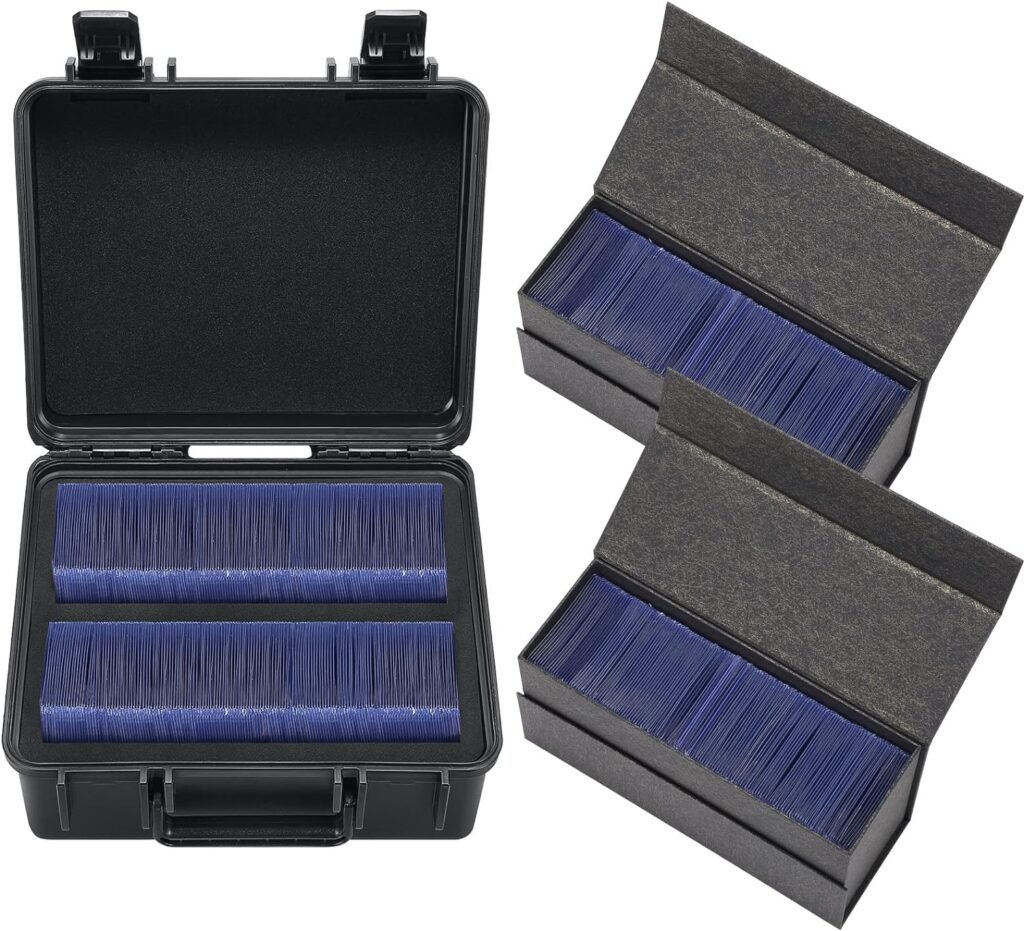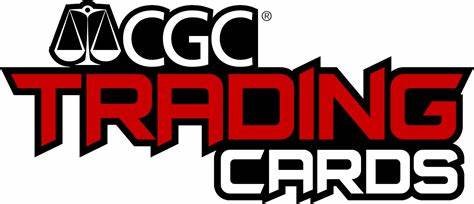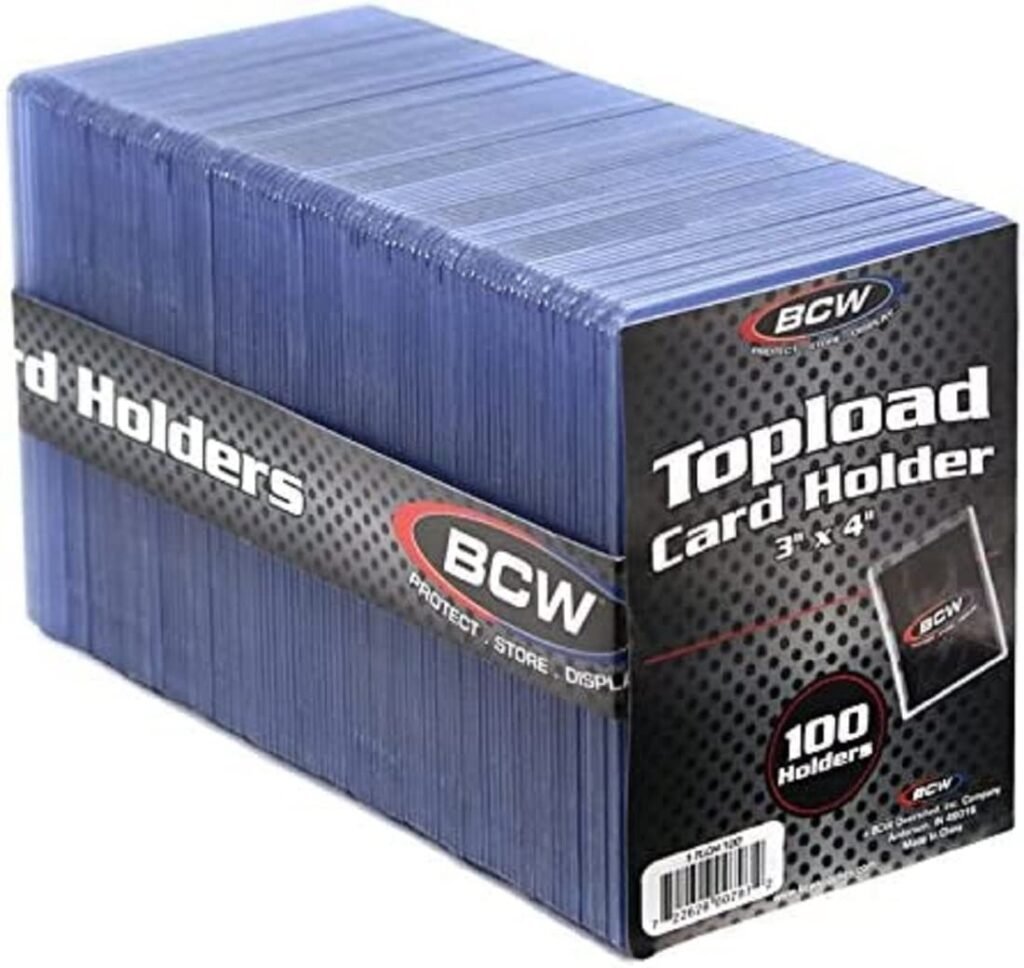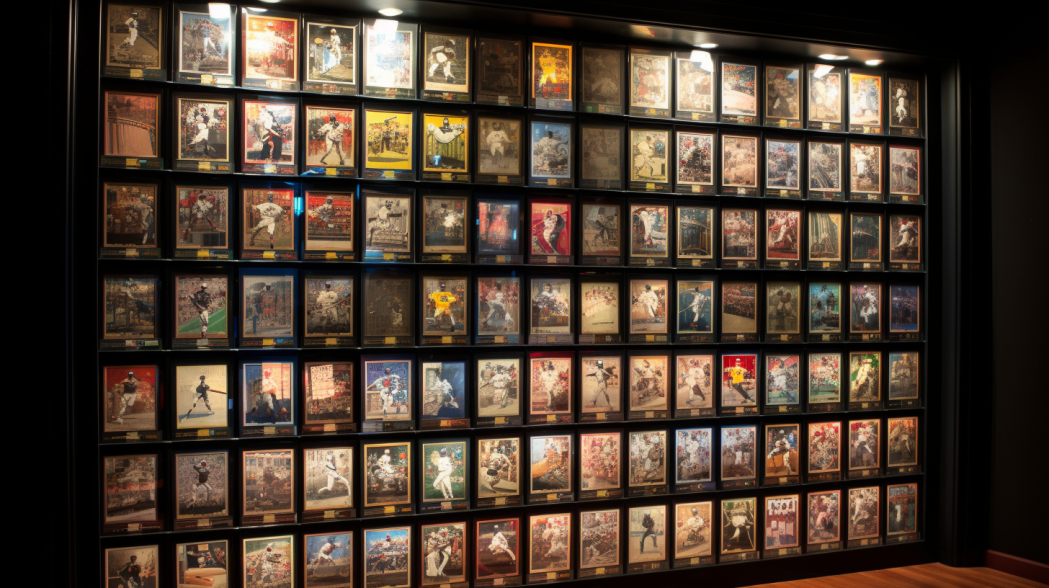Get ready to embark on an exciting journey into the world of rare card collecting! Whether you’re a seasoned collector or just starting out, this comprehensive guide will provide you with all the essential tips and tricks to build an impressive collection. From understanding the different types of rare cards to mastering the art of trading and preserving your precious cards, this article has got you covered. So grab your magnifying glass, dust off those card sleeves, and let’s dive into the captivating world of rare card collection!
Understanding Rare Cards
What are rare cards?
Rare cards are highly sought-after and valuable collectible cards found in various hobbies and industries such as trading card games, sports cards, and collectible card games. These cards are different from common cards, as they are often more difficult to obtain and possess unique qualities that make them desirable to collectors. Rare cards are typically limited in production, have unique designs, and may feature special abilities or attributes that set them apart from other cards in the collection.
Different types of rare cards
There are several different types of rare cards, depending on the hobby or industry they belong to. In trading card games, rare cards can include cards with holographic or foil finishes, cards with special rarity symbols, or cards with limited edition prints. Sports cards can have rare variations such as autographed cards, game-worn memorabilia cards, or cards featuring exclusive designs or artwork. Collectible card games may have rare cards that are highly powerful or have unique abilities, making them coveted by players and collectors alike. Each type of rare card offers its own unique appeal and adds value to a collection.
Why collect rare cards?
Collecting rare cards can be a thrilling and rewarding hobby for many reasons. Firstly, rare cards often hold significant monetary value, and their worth can increase over time, making them a potential investment. Secondly, rare cards are often aesthetically pleasing and add beauty to a collection. Their unique designs, special finishes, and limited availability make them visually appealing to collectors and enthusiasts. Lastly, collecting rare cards can be a way to connect with others who share the same interests and passions. Joining online communities and attending card conventions can create a sense of community and provide opportunities for trading, collaborating, and learning from fellow collectors.
How to determine a rare card
Determining whether a card is rare depends on a variety of factors. The rarity of a card is often indicated through special symbols or labels on the card itself. These can include abbreviations like “R” for rare, “SR” for super rare, or “UR” for ultra rare. Foil or holographic finishes, unique artwork, and limited edition prints are also indicators of a card’s rarity. Researching the specific card set or collection can provide further information on the rarity of a particular card. Additionally, professional grading services can help determine the rarity and condition of a card, providing an unbiased assessment of its value in the market.
Building a Rare Card Collection

Setting goals for your collection
Setting goals for your rare card collection is essential to stay focused and motivated. Determine what you hope to achieve with your collection, whether it’s completing a specific set, obtaining certain rare cards, or building a diverse collection across different themes or industries. By setting clear goals, you can tailor your collecting strategy and make more informed decisions on which cards to pursue.
Deciding on a theme or focus
Choosing a theme or focus for your rare card collection can make the experience more cohesive and enjoyable. It could be collecting cards from a specific trading card game, a particular sports league or team, or cards featuring artwork from a favorite artist or illustrator. Having a theme or focus can give your collection a unique identity and make it more satisfying to showcase and share with others.
Finding rare cards
Finding rare cards to add to your collection often involves a combination of different methods. Local hobby shops, online retailers, and specialized card stores are great places to start your search. These establishments may offer rare cards through booster packs, individual card sales, or pre-arranged collections. Additionally, attending card conventions and events can provide opportunities to buy, trade, or discover rare cards. Keeping an eye on online marketplaces, auctions, and trading platforms can also help uncover rare cards that may be difficult to find elsewhere.
Buying rare cards
Buying rare cards directly from established retailers or reputable sellers is a common method of acquiring valuable and authentic cards. When purchasing rare cards, it is essential to consider factors such as condition, rarity, and price. Research the current market value of the cards you are interested in and compare prices from various sources to ensure you are getting a fair deal. It’s also important to verify the authenticity of the cards and the reputation of the seller to avoid counterfeit or misrepresented items.
Trading rare cards
Trading rare cards with other collectors can be an exciting and cost-effective way to expand your collection. Joining online communities, attending card conventions, or participating in trading platforms and forums can provide opportunities to connect with fellow collectors and negotiate trades. When trading cards, it’s crucial to accurately assess the value and rarity of your own cards to ensure a fair exchange. Be open to negotiations, communicate clearly with other traders, and research the value of the cards being offered to ensure a mutually beneficial trade.
Joining online communities and forums
Joining online communities and forums dedicated to rare card collecting can provide valuable insights, resources, and connections within the collecting community. These platforms offer opportunities to engage with like-minded individuals, share experiences, learn about upcoming releases or events, and discover new rare cards. Participating in online discussions, seeking advice from experienced collectors, and sharing your own knowledge can enhance your collecting journey and help you stay up to date with the latest trends and developments in the rare card collecting world.
Caring for Rare Cards
Understanding card condition
Properly understanding card conditions is crucial for maintaining the value and longevity of rare cards. Card condition refers to the overall state of the card, including factors such as corners, edges, surface, and centering. Cards in excellent condition without any visible wear or damage are highly desirable among collectors. Familiarize yourself with grading standards and techniques used by professional grading services to better assess the condition of your cards and determine their value.
Storing rare cards

Storing rare cards in a suitable environment is essential for their long-term preservation. Acid-free card sleeves and top loaders provide protection against dust, moisture, and accidental damage. These archival-quality materials prevent the cards from yellowing or deteriorating over time. Depending on the size and quantity of rare cards you possess, consider investing in card storage boxes or binders that provide ample space and organization options. Keep your stored cards in a cool, dry, and stable environment to prevent humidity or extreme temperatures from causing damage.
Protecting rare cards
In addition to proper storage, protecting rare cards from external elements is vital. Avoid exposing them to direct sunlight, as UV rays can fade colors and damage the card surface. Moisture can also cause irreparable damage, so it’s important to keep your rare cards in a dry environment. Be cautious when handling rare cards to prevent accidental bends, tears, or creases. Always wash and dry your hands thoroughly before touching cards to avoid transferring oils or dirt onto the surface, which can cause long-term damage.
Handling rare cards
When handling rare cards, always do so with care to avoid any accidental damage. Hold the cards gently by the edges, avoiding excessive pressure on the corners or center of the card. Use clean hands or wear cotton gloves to minimize the transfer of oils or dirt. It is also advisable to handle cards on a clean, flat surface to prevent accidental drops or spills. By adopting proper handling techniques, you can maintain the condition and preserve the value of your rare cards.
Displaying rare cards

Displaying rare cards adds an extra layer of enjoyment to collecting. There are various ways to showcase your rare cards, depending on your personal preferences and available space. One option is to use card display stands or frames, which allow you to exhibit individual cards with their unique artwork and features. Another option is to organize and store cards in binders or albums with transparent sleeves, providing a neat and organized way to flip through and admire your collection. For those with larger collections, creating a dedicated card collection room can provide an immersive and visually stunning display of rare cards.
Grading and Valuing Rare Cards
The importance of grading
Grading rare cards is an essential process for determining their condition and value. Professional grading services assess a card’s condition on a standardized scale, taking into account factors such as corners, centering, edges, and surface quality. Graded cards come encapsulated in tamper-evident cases, providing protection and authentication. Grading provides collectors with a reliable and unbiased assessment of a card’s condition, making it easier to trade, sell, or buy rare cards with confidence.
Professional grading services




Several reputable professional grading services are available to collectors. These services employ trained graders who evaluate the condition of a card and assign it a grade based on established standards. Major grading companies include PSA (Professional Sports Authenticator), BGS (Beckett Grading Services), and CGC (Certified Guaranty Company). Each grading company has its own grading scale, and collectors often have their preferences based on reputation, cost, and specific requirements. Utilizing the services of a professional grading company can add value and credibility to your rare card collection.
Factors that affect card value
Several factors affect the value of rare cards. Rarity, condition, demand, and market trends all play a significant role in determining a card’s value. The scarcity of a particular card can significantly increase its value, especially if it belongs to a limited edition or is part of a highly sought-after set. The condition of a card, with higher grades indicating better preservation, can also impact its value. Additionally, demand from collectors and the broader market can influence card prices. Staying informed about market trends, collector preferences, and specific card attributes can help you gauge the potential value of your rare cards.
Researching card values
Researching card values is crucial to gaining a better understanding of the market and making informed decisions. Online resources, price guides, and card trading platforms can provide valuable insights into the value and rarity of specific cards. Consult reputable sources that take into account recent sales data, graded card sales, and market trends. Additionally, staying connected with other collectors through online communities and forums can provide firsthand knowledge and shared experiences in valuing rare cards.
The website that I use to track my collection and how my cards are increasing in value is SportsCardsPro.com. SportsCardsPro is a comprehensive platform dedicated to sports card enthusiasts, collectors, and resellers. The website offers a wide range of tools and features that cater to the needs of the sports card community. One of the standout features is the “Collection Tracker,” which allows users to keep track of the cards they own and monitor the value of their collection. This ensures that collectors have an up-to-date understanding of their collection’s worth. Additionally, the platform provides a “Lot Value Calculator” that quickly calculates the total value of multiple cards, making it easier for users to gauge the worth of their lots.
Moreover, SportsCardsPro offers a unique “eBay Deal Scanner” that showcases sports card deals on eBay seconds after they are listed for sale, ensuring that users never miss out on a potential bargain. Another innovative tool is the “Card Centering Calculator,” which calculates card centering by allowing users to submit a card photo. This is particularly useful for those who are keen on the aesthetics and condition of their cards. Furthermore, the website boasts a free sports card marketplace where users can buy and sell cards without any fees, making transactions seamless and cost-effective. With its array of tools and features, SportsCardsPro stands out as a one-stop destination for sports card aficionados.
For Pokemon cards I use PriceCharting.com which is incorporated with SportsCardsPro, with one membership you can use both sites. PriceCharting is a versatile platform tailored for collectors and enthusiasts of various collectibles, ranging from video games to trading cards, comics, coins, and sports cards. The website offers a plethora of tools and features designed to assist collectors in understanding the value of their items. One of the primary tools is the “Collection Tracker,” which enables users to calculate the value of their collection and see what they own while browsing PriceCharting. This tool is invaluable for collectors who want to keep a tab on the worth of their collection and make informed decisions about buying or selling items.
In addition to tracking collections, PriceCharting provides comprehensive price guides for a wide array of items. Whether you’re interested in the value of a Nintendo NES game, a rare Pokemon card, or a vintage Marvel comic, PriceCharting has you covered. The platform also boasts tools like the “Lot Value Calculator” and the “eBay Game Sniper,” which are designed to help users get the best deals and understand the market value of lots. Furthermore, the website offers a unique feature called “eBay Lot Bot,” which aids in finding valuable lots on eBay. With its extensive tools and vast database, PriceCharting stands as a premier destination for collectors seeking to navigate the world of collectibles with confidence.
Determining rarity
Determining the rarity of a card involves researching the specific card set or collection. Rare cards are often indicated by special symbols, scarcity indicators, or limited edition prints. Rarity can also refer to specific card variations, such as alternate artwork, promotional releases, or autographed cards. By understanding the production numbers, distribution methods, and special attributes of a card, you can determine its rarity and value within a collection.
Preserving and Protecting Rare Cards
Using card sleeves and top loaders


One of the simplest and most effective ways to protect rare cards is by using card sleeves and top loaders. Card sleeves are transparent, polypropylene protective covers that fit tightly around the card, preventing scratches, moisture, and dust accumulation. Top loaders are rigid plastic holders that provide additional protection and help maintain a card’s shape and condition. By using card sleeves and top loaders, you can enjoy your rare cards without worrying about accidental damage or wear.
Investing in acid-free storage options
To further preserve rare cards, it is recommended to invest in acid-free storage options. Acid-free materials, including storage boxes, binders, sleeves, and dividers, are specially designed to prevent chemical reactions that can cause card damage or degradation. Acid-free storage options help protect against yellowing, creasing, and discoloration, ensuring your rare cards remain in pristine condition over time.
Avoiding direct sunlight and moisture
Direct sunlight and excessive moisture are two common enemies of collecting rare cards. UV rays from sunlight can cause fading and damage to the colors and artwork of cards. To prevent this, store your cards in a dry, dark location away from direct sunlight or use UV-protective display cases. Moisture can lead to mold, warping, and staining, so it is important to keep your rare cards in a cool and dry environment with controlled humidity levels.
Important handling tips
Proper handling of rare cards is essential to avoid accidental damage. Always handle cards with clean and dry hands to prevent oil or dirt transfer. Holding cards by the edges and avoiding excessive pressure on corners or the center can prevent creasing or bending. It is also advisable to avoid eating or drinking near your cards to minimize the risk of spills. By following these simple handling tips, you can protect the condition and value of your rare cards for years to come.
Showcasing and Displaying Rare Cards
Choosing the right display options
Choosing the right display options is crucial to showcase your rare cards in an appealing and organized manner. There are numerous display options available, ranging from wall-mounted frames to tabletop stands and custom display cases. Consider the size and number of cards you want to display, as well as the overall aesthetic you wish to achieve. Explore different display options to find the one that best suits your collection and allows your rare cards to shine.
Creating a card display wall

A card display wall is an excellent way to showcase your rare cards as a focal point in a room. By utilizing wall-mounted frames or display cases, you can create an eye-catching and visually appealing arrangement for your cards. Arrange your rare cards in a grid or design a unique pattern to draw attention to the intricacies of each card’s artwork. Adding accent lighting can further enhance the display and highlight the details of your rare cards.
Framing rare cards
Framing rare cards can provide an elegant and professional display option. Choose frames that complement the size and style of your cards, ensuring they fit securely without causing damage. Consider using UV-protective glass or acrylic to prevent fading due to sunlight exposure. Framing rare cards not only protects them from dust and physical harm but also creates a striking presentation that can be admired by anyone who views your collection.
Using binders and albums
For collectors with larger collections or those who prefer a more portable display option, using binders and albums is an ideal choice. Select binders with archival-quality sleeves that offer protection against dust, moisture, and bending. Organize your cards in a logical and visually appealing manner, whether it’s by set, theme, or rarity. Flip-through binders and albums allow you to easily browse and showcase your cards with ease.
Designing a card collection room
For avid collectors, designing a dedicated card collection room can transform your rare card display into a visually stunning and immersive experience. Consider factors such as lighting, shelving, and seating to create a comfortable and inviting space. Choose display options that can accommodate your entire collection while still allowing room for growth and expansion. Add personal touches, such as themed decorations or additional memorabilia, to create a unique environment that reflects your passion for rare card collecting.

Researching Rare Cards
Learning card history and lore
Researching the history and lore behind rare cards can deepen your understanding and appreciation for their value and significance. Dive into the origins of the hobby or industry associated with your rare cards, whether it’s the history of trading card games, the evolution of sports cards, or the development of collectible card games. Familiarize yourself with the storylines, characters, and lore behind the specific cards or sets in your collection. Understanding the background and context can enhance your overall collecting experience.
Studying card variations and sets
Studying card variations and sets is essential for collectors who want to delve deeper into the intricacies of rare cards. Many rare cards come in different variations, such as alternate artwork, foil prints, or special editions. Exploring these variations can provide insights into the design process, printing techniques, and rarity of specific cards. Additionally, understanding different card sets, expansions, or releases allows you to appreciate the progression and evolution of rare cards over time.
Understanding limited editions and releases
Limited editions and releases are highly sought-after by collectors due to their scarcity and exclusivity. Limited edition cards are typically produced in smaller quantities than regular cards and often come with unique features, such as special artwork or foiling. Researching limited edition cards and their availability can help you identify rare cards with high collector demand and potential long-term value. Staying updated on upcoming limited edition releases can also provide opportunities to add rare cards to your collection before they become highly sought-after.
Collecting rare cards from specific eras or genres
Collecting rare cards from specific eras or genres can add a thematic element to your collection. Whether you are interested in vintage sports cards from a particular decade or rare cards from a specific trading card game expansion, focusing on a specific era or genre can create a more specialized and curated collection. Research the unique attributes, trends, and historical context of the era or genre you choose to collect rare cards from, enabling you to fully immerse yourself in that specific aspect of rare card collecting.
Building Connections within the Collecting Community
Joining local collector groups
Joining local collector groups is a fantastic way to connect with fellow rare card enthusiasts in your area. Search for collector groups or clubs devoted to the hobby or industry that aligns with your rare card collection interests. These groups often organize meetups, swaps, and events that offer opportunities to trade, sell, and discuss rare cards. Engaging with local collectors can not only expand your network but also provide insights, knowledge, and tips that can enhance your rare card-collecting journey.
Attending card conventions and events
Card conventions and events are gathering places for collectors and enthusiasts alike, offering a chance to immerse yourself in the world of rare card collecting. Attend local and national conventions dedicated to trading card games, sports cards, or collectible card games to discover rare cards, meet industry professionals, and participate in panels or workshops. These events often feature vendors, artists, and special guests, creating a vibrant and exciting environment for collectors to engage with the community.
Participating in online auctions and trading platforms
Participating in online auctions and trading platforms can open up a world of opportunities to acquire rare cards and connect with collectors worldwide. Websites and platforms dedicated to rare card auctions provide a transparent and competitive marketplace for buying and selling. Trading platforms allow collectors to directly engage in trades, negotiations, and discussions with other collectors. Participating in these online spaces can expand your access to rare cards and foster connections with collectors from different regions and backgrounds.
Sharing your collection on social media
Sharing your rare card collection on social media platforms can be a rewarding way to connect with fellow collectors and showcase your passion. Platforms such as Instagram, Twitter, and Facebook offer spaces to share photos, stories, and insights about your rare cards. Engaging with other collectors, participating in hashtags or challenges, and joining collector communities within social media platforms can facilitate connections and discussions about rare card collecting.
Collaborating with other collectors
Collaborating with other collectors is an excellent way to enhance and diversify your rare card collection. Collaborative projects can involve trading, exchanging knowledge, or pooling resources to obtain specific rare cards or complete certain sets. Collaborations can also extend to creative endeavors, such as organizing joint displays or creating custom art or accessories to enhance your collectibles. Sharing the experience and passion for rare card collecting with others can create lasting friendships and mutually beneficial collecting opportunities.
The Future of Rare Card Collection
Predicting future trends
Predicting future trends in rare card collection is challenging, as the market and collector preferences can shift over time. Staying informed about industry developments, technological advancements, and consumer interests can give you insights into potential future trends. Monitoring emerging card sets, expansions, or game releases can provide clues about what cards or themes may gain popularity in the future. Keeping an open mind and being adaptable to changes in the rare card collecting landscape can help you stay ahead and make informed decisions for your collection.
Investing in rare cards
Collecting rare cards can be seen as a form of investment, as certain cards can appreciate in value over time. However, investing in rare cards should be approached with caution and proper research. Thoroughly assess the market demand, historical sales data, and rarity of specific cards before making investment decisions. It is advisable to consult with experts, attend seminars or conferences, and consider the long-term potential of specific rare cards before investing significant resources.
Emerging technologies in card collecting
Emerging technologies continue to impact the rare card collecting industry. Digital cards, blockchain technology, and virtual marketplaces are reshaping the way collectors engage with and collect rare cards. Digital collectibles provide new possibilities for ownership, interaction, and trading of virtual cards. Blockchain technology offers increased security, authentication, and provenance for rare cards, ensuring their legitimacy and uniqueness. Staying informed about these emerging technologies and their implications for rare card collecting can provide insights into future possibilities and developments within the hobby.
Changing demographics and the impact on rare cards
As demographics shift, so too does the impact on rare card collecting. Younger generations with different interests and spending habits are entering the hobby, leading to changes in card design, availability, and targeted marketing. Collectibles from diverse cultural backgrounds and underrepresented communities are gaining recognition and demand within rare card collecting. Being aware of these demographic shifts and their impact on the hobby can help collectors adapt, embrace new trends, and appreciate the growing diversity within rare card collections.
Conclusion
Collecting rare cards is a rewarding and multifaceted hobby that offers a combination of aesthetic appreciation, investment potential, and social engagement. By understanding the different types of rare cards, setting goals, and deciding on themes or focuses, collectors can embark on a fulfilling journey. Building a rare card collection involves careful research, finding sources for rare cards, and exploring different acquisition methods such as buying and trading. Additionally, collectors must prioritize the proper care, storage, and protection of their rare cards to preserve their condition and value. Valuing and grading rare cards provide collectors with insights into market trends, card rarity, and potential investment opportunities. Displaying rare cards can be done through various methods to suit personal preferences and available space. Engaging with the rare card collecting community, attending events, and collaborating with other collectors create connections and shared experiences. The constantly evolving landscape of rare card collecting, including future trends, emerging technologies, and changing demographics, provides exciting possibilities for collectors to explore. Ultimately, rare card collecting is a joyful and ever-expanding endeavor that allows collectors to celebrate the rarity and uniqueness of each card in their collection.

Hi there! I’m Felix Gonzalez and I am the owner of Card Collecting Insider, and I’m thrilled to welcome you to my site! With our tagline “Uncover the Art of Collecting, One Card at a Time,” I’m here to provide you with expert insights, valuable resources, and the latest trends in the world of card collecting. Whether you’re a seasoned collector or just starting out, I’m dedicated to helping you discover hidden gems and sharing insider tips to elevate your collection. So join me on this exciting journey, as I dive deep into the captivating realm of card collecting. Let’s unlock the true beauty of these collectible treasures together!

